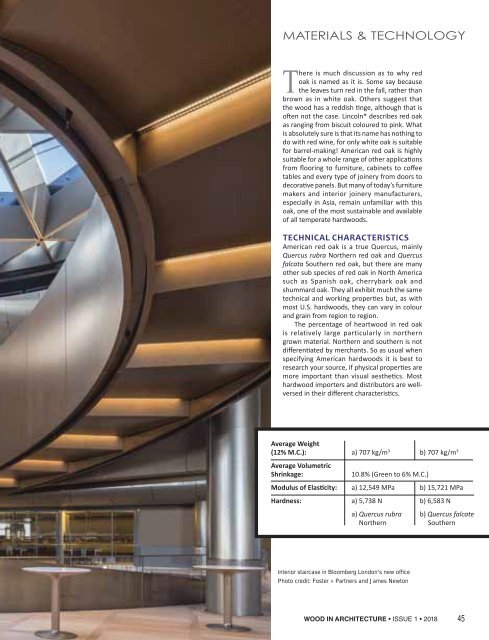Wood In Architecture Issue 1, 2018
First published in 2017, Wood in Architecture (WIA) is a bi-annual trade magazine devoted to the international timber construction sector. The newest addition to the Panels & Furniture Group of wood magazines, WIA features in-depth insights to the latest industry news, incredible projects and leading trade events. WIA is an advocate for timber as a material of choice for today’s built environment, and is the perfect source of inspiration for architects, builders, engineers and interior designers across the globe.
First published in 2017, Wood in Architecture (WIA) is a bi-annual trade magazine devoted to the international timber construction sector. The newest addition to the Panels & Furniture Group of wood magazines, WIA features in-depth insights to the latest industry news, incredible projects and leading trade events. WIA is an advocate for timber as a material of choice for today’s built environment, and is the perfect source of inspiration for architects, builders, engineers and interior designers across the globe.
You also want an ePaper? Increase the reach of your titles
YUMPU automatically turns print PDFs into web optimized ePapers that Google loves.
MATERIALS & TECHNOLOGY<br />
There is much discussion as to why red<br />
oak is named as it is. Some say because<br />
the leaves turn red in the fall, rather than<br />
brown as in white oak. Others suggest that<br />
the wood has a reddish nge, although that is<br />
oen not the case. Lincoln* describes red oak<br />
as ranging from biscuit coloured to pink. What<br />
is absolutely sure is that its name has nothing to<br />
do with red wine, for only white oak is suitable<br />
for barrel-making! American red oak is highly<br />
suitable for a whole range of other applicaons<br />
from ooring to furniture, cabinets to coee<br />
tables and every type of joinery from doors to<br />
decorave panels. But many of today’s furniture<br />
makers and interior joinery manufacturers,<br />
especially in Asia, remain unfamiliar with this<br />
oak, one of the most sustainable and available<br />
of all temperate hardwoods.<br />
TECHNICAL CHARACTERISTICS<br />
American red oak is a true Quercus, mainly<br />
Quercus rubra Northern red oak and Quercus<br />
falcata Southern red oak, but there are many<br />
other sub species of red oak in North America<br />
such as Spanish oak, cherrybark oak and<br />
shummard oak. They all exhibit much the same<br />
technical and working properes but, as with<br />
most U.S. hardwoods, they can vary in colour<br />
and grain from region to region.<br />
The percentage of heartwood in red oak<br />
is relatively large particularly in northern<br />
grown material. Northern and southern is not<br />
dierenated by merchants. So as usual when<br />
specifying American hardwoods it is best to<br />
research your source, if physical properes are<br />
more important than visual aesthecs. Most<br />
hardwood importers and distributors are wellversed<br />
in their dierent characteriscs.<br />
<br />
a) 707 kg/m 3 b) 707 kg/m 3<br />
<br />
<br />
10.8% (Green to 6% M.C.)<br />
a) 12,549 MPa b) 15,721 MPa<br />
a) 5,738 N b) 6,583 N<br />
a) Quercus rubra b) Quercus falcate<br />
Northern<br />
Southern<br />
<strong>In</strong>terior staircase in Bloomberg London's new office<br />
Photo credit: Foster + Partners and James Newton<br />
WOOD IN ARCHITECTURE • ISSUE 1 • <strong>2018</strong><br />
45


















